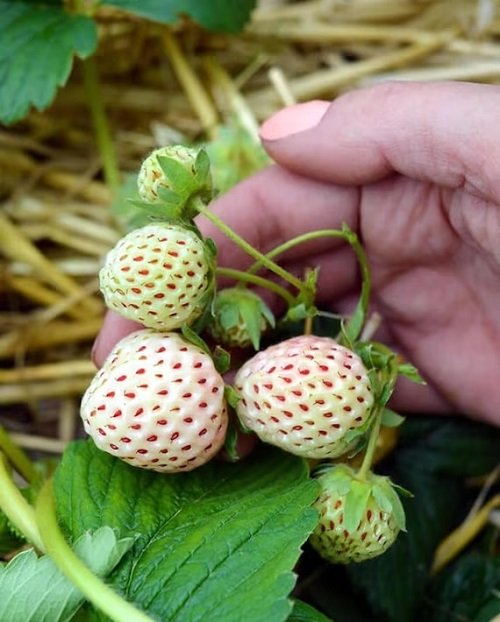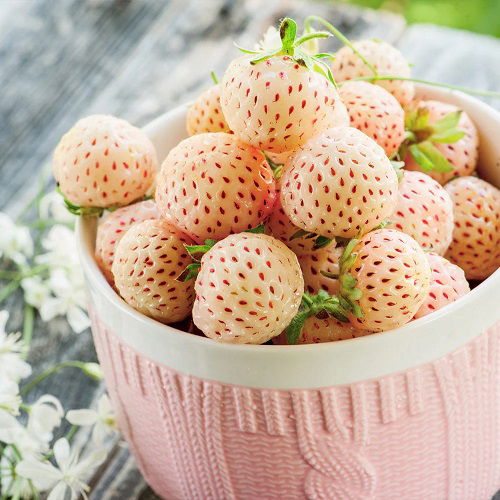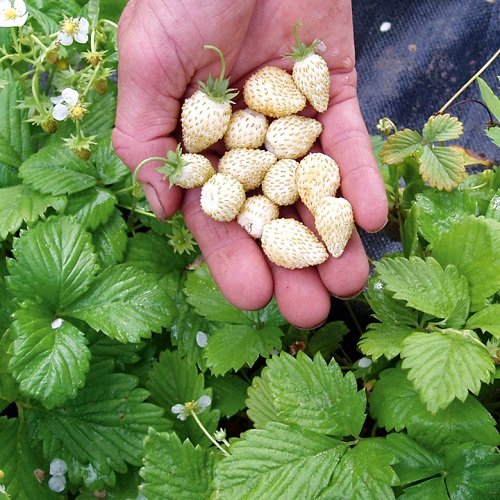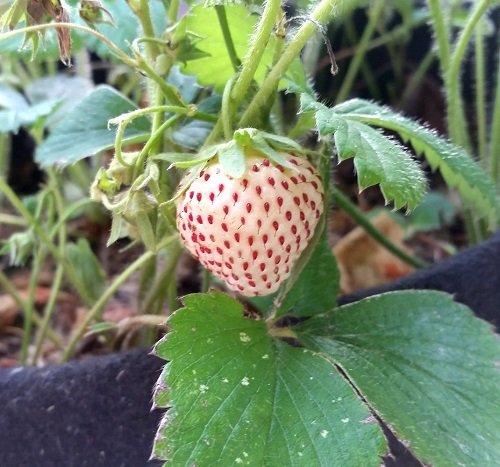Learn How To Grow Hula Berries here to add a delicious blend of sweet and tarty flavors to your summer harvest!
These yellowish-white, tasty hula berries will surely bring a smile to your face after a bite of their unique mellow pineapple flavor. And the best part is they’re easy to grow! So, let’s read here how you can cultivate them in your yard!
What Are Hula Berries?
Hula Berries, also known as pineberries, alpine berries, or white strawberries. These berries are unique fruits with blending traits from North American red strawberries (Fragaria virginiana) and Chilean white strawberries (Fragaria chiloensis).
Some people thought they were genetically modified, but that’s a misconception! Rather, they grow naturally and develop different characteristics through cross-pollination with regular strawberries. Hula berries are small, similar to nickels in size, with bright red seeds attached to the yellowish-white body.
The Evolution of Hula Berries
The story of hula berries traces back to the 17th and 18th centuries when strawberries from North and South America were brought to Europe and grew alongside each other. This led to the production of the modern strawberries we know today!
But there’s more to the story! Among these evolving strawberries, a few plants produced white or pink berries. But they were often overlooked. Then, a Dutch breeder noticed something intriguing about these unique berries and took these white strawberry seedlings and planted them alongside traditional strawberries for pollination.
Eventually, his efforts paid off, giving rise to the hula berry—a delightful fruit with a unique taste and appearance.
How To Grow Hula Berries?
1. Cross-Pollination is Paramount!
Cross-pollination is essential! While planting, remember to plant three hula berry plants for every traditional Sonata strawberry plant. Hula berries can’t pollinate without the aid of pollinators.
This process happens naturally when bees transfer pollens between the plants as they visit them!
2. Plant Size and Cultivation Matters
Hula berries are smaller in size than standard ones! So, remember this trait when planning your garden. And it would be best to pair the red and white varieties in tiered strawberry pots.
If you are eager to eat fruits, then you can get a well-grown plant from a garden center!
The Right Pot Size
A tiered strawberry pot is an excellent choice for planting both the Hula Berry and its pollination partner. It provides ample space and an attractive display.
Requirements for Growing Hula Berries
Sunlight
Keep the plants in a place where they receive at least 12 hours of direct sunlight daily.
Soil
Hula berries prefer a loose, loamy potting mix that holds moisture and simultaneously drains excess water. Make sure the pots have drainage holes in the bottom.
Watering and Mulching
Water whenever the soil feels dry about 1 inch below the surface. Also, mulching helps in retaining soil moisture and keeps the root cool.
Compost
Enrich the soil with compost during planting. Add compost as a side dressing in subsequent years to nourish the plants.
Hula Berries Care

Manage the Runners
Hula berries send out runners during the summer to produce new plants. You must regularly monitor and manage these runners to maintain plant health and encourage fruit production!
Pruning
Pruning hula berries helps maintain plant health, improve airflow, and increase fruit production.
- Pull off yellow, dead, damaged leaves, stems, or runners.
Pests and Diseases
Common pests include slugs, snails, aphids, and spider mites. Monitor the plants regularly and take appropriate measures to control these pests, such as handpicking or using organic insecticidal soaps.
-
Harvesting Hula Berries
Harvesting hula berries is the final step for which you have been desperately waiting. Right! So, for this, monitor the fruit; when the berries achieve their full size and exhibit the characteristic white color with red seeds, then you can do the honors!
Since they are smaller and more delicate than traditional strawberries, handle them gently to avoid bruising.





